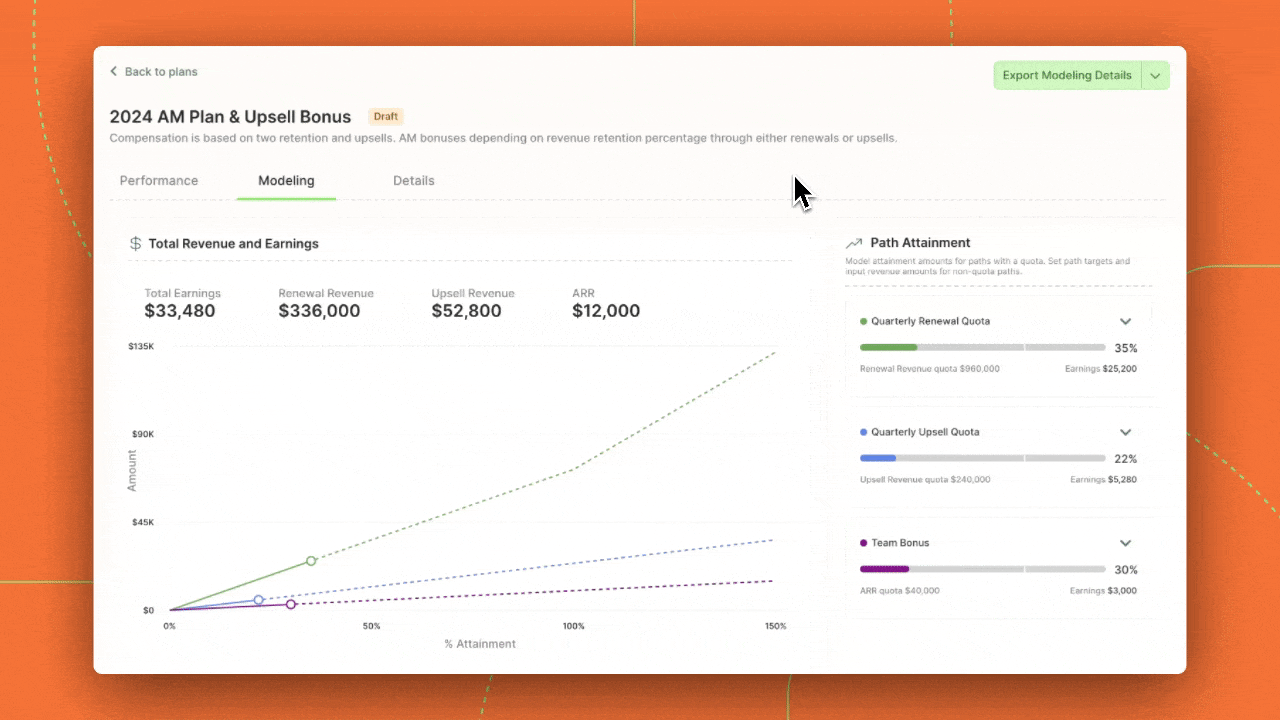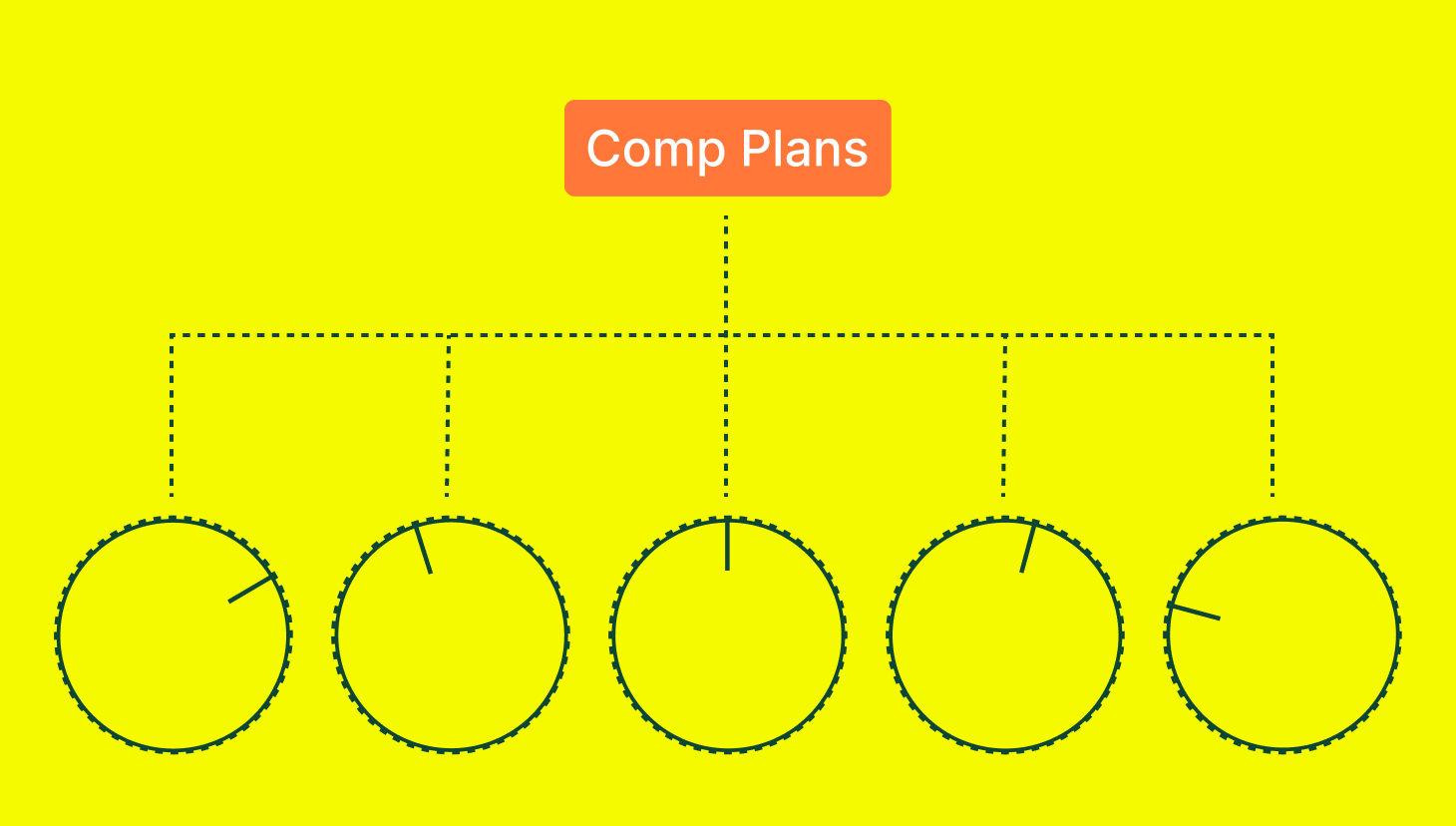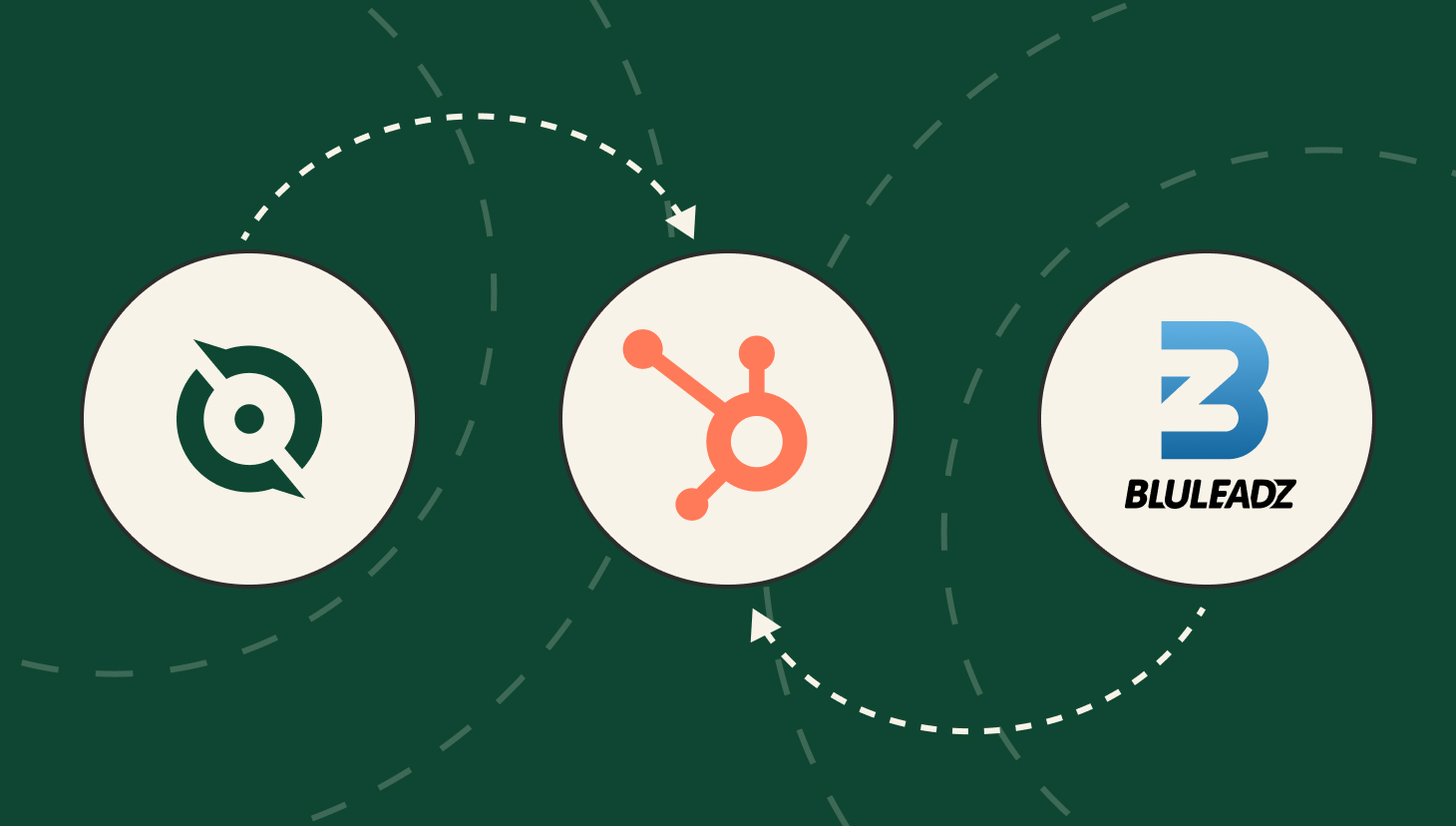Effective comp plans act as a powerful engine, driving peak performance from your team, attracting and retaining top talent, and ultimately fueling business growth.
Yet 97% of RevOps, Sales, and Finance leaders struggle with their comp plan processes, according to our compensation report.
A poorly structured plan can backfire with unintended consequences.
Imagine an engine struggling with misfiring cylinders and a leaky fuel line. That’s what a lousy comp plan can be like: high costs due to inefficient structures, low motivation from reps feeling unfairly compensated, and administrative burdens for your finance team bogged down in manual calculations.
The good news is that you can avoid these pitfalls and optimize your compensation plan for both performance and cost-effectiveness.
Here, we’ll explore five key strategies to achieve this balance:
- Aligning Your Comp Plan with Key Business Objectives
- Strategic Use of Commission Floors for CSM and Leadership Roles
- Leveraging Modeling Tools for Cost Analysis
- Automation: Streamlining Calculations and Payments
- Data-Driven Adjustments According to Reporting and Feedback Loops data
We’ll explore each strategy in detail, giving you the tools to optimize your compensation plan and unlock your team’s peak performance.
Design, track, and manage variable incentives with QuotaPath. Give your RevOps, finance, and sales teams transparency into sales compensation.
Talk to SalesAlign Your Comp Plan to Your North Star Metric
First, check to see how well your compensation plans align with your key business goals for the year. This is important and should always be the first step when designing a comp plan, regardless of role or team.
Doing so drives focused behavior for long-term success by encouraging your team to sell the right kind of deals. (Think: accounts that generate recurring revenue or likely have a high customer lifetime value).
When rewards are tied to the company’s overall success, employees feel their efforts contribute to a larger goal. This fosters a sense of purpose and motivates them to go beyond individual targets. It also creates strategic alignment across the company, leading to a unified front from marketing to product to your front-line sellers and those responsible for renewals.
Plus, North Star Metrics, when created correctly, are measurable metrics. By tying your comp plan to this data, you can measure its effectiveness and identify where adjustments need to be made to your compensation structure.
Steps to Align Comp Plans to North Star Metric
Clearly Define Your NSM: Ensure everyone understands what the NSM is and why it’s important. Communicate the metric and how it connects to the company’s overall strategy and vision.
Identify Key Behaviors: Analyze what actions and behaviors contribute most to achieving the NSM. For example, this could be focusing on acquiring high-value customers, increasing customer retention, or driving product adoption.
Integrate NSM into Comp Structure: This might involve incorporating the NSM directly into commission calculations (e.g., weighting it alongside other factors), rewarding achievement of specific NSM-related goals with bonuses, or using it as a performance metric for leadership teams.
Track and Measure Results: Monitor the impact of the aligned comp plan on NSM performance. Analyze data on employee behavior, sales activity, and overall NSM achievement to assess the system’s effectiveness.
Adapt and Refine: Be prepared to adjust the comp plan based on the data and feedback. As market conditions or business priorities evolve, the NSM or its impact on the comp plan might need to be refined to maintain optimal alignment.
Remember: Aligning comp plans with the NSM isn’t a one-time event. It’s an ongoing process that requires clear communication, data analysis, and a willingness to adapt based on results. However, the long-term benefits of a focused and motivated workforce driving towards the company’s north star are well worth the effort.
RevOps, sales leaders, and finance teams use our free tool to ensure reps’ on-target earnings and quotas line up with industry standards. Customize plans with accelerators, bonuses, and more, by adjusting 9 variables.
Build a Comp PlanStrategic Use of Commission Floors
Next, consider implementing commission floors for leadership and customer success roles.
A floor, or “cliff,” is a minimum sales or revenue generation threshold before qualifying to earn a commission.
Here’s a breakdown of how it works:
- Threshold: The company sets a specific target amount (revenue or units sold) that a salesperson needs to reach before becoming eligible for commission.
- No Commission Below the Floor: If the employee fails to meet the commission floor, they don’t earn any commission, regardless of the total amount they sold.
- Earning Commissions Above the Floor: Once a salesperson surpasses the commission floor, they typically start earning commission based on a pre-defined commission rate or structure. This commission rate could be a flat percentage, tiered based on performance, or a combination of both.
Why should you consider adding a floor to your CSM or leadership plans?
- It motivates performance.
- Controls cost by preventing payouts for low-performing salespeople.
- It discourages discounting since commissions are only earned once passing the floor.
However, keep in mind that floors can backfire and be demotivating. Note: We are not recommending this for individual sales reps, just customer teams and leadership. Make sure your floor is fair and attainable; otherwise, you’ll lose reps to comp plans at other companies.
VP of Sales Compensation Plan Example (with floor)
This example incorporates a commission floor set at 80% of quota attainment. This means the VP of Sales won’t earn any commission unless the entire sales team collectively achieves at least 80% of their quarterly sales target.
Base Salary: $250,000
Commission Structure:
-
- Commissionable Revenue: All new Annual Recurring Revenue (ARR) generated by the sales team
-
- Commission Rate: Tiered commission based on achievement of quarterly goals
-
- 0-100% of quota: 3% commission on commissionable revenue
-
- 100-120% of quota: 5% commission on commissionable revenue
-
- 120%+ of quota: 7% commission on commissionable revenue
-
- Commission Rate: Tiered commission based on achievement of quarterly goals
-
- Commission Floor: 80% of quota attainment. The VP of Sales will not earn any commission unless the sales team achieves at least 80% of their overall quarterly quota.
Bonus Potential:
-
- Annual Bonus: Up to 20% of base salary based on achievement of annual team and individual goals (e.g., exceeding annual revenue target, reducing customer churn rate)
pen_spark
- Annual Bonus: Up to 20% of base salary based on achievement of annual team and individual goals (e.g., exceeding annual revenue target, reducing customer churn rate)

Leveraging Modeling Tools for Cost Analysis
Another great way to optimize your compensation strategy is to implement a tool to help you model scenarios and analyze costs.
Making data-driven decisions is crucial, and modeling tools like QuotaPath can be invaluable. These tools allow you to simulate different compensation structures and predict their financial impact, ensuring you choose the most cost-effective and performance-driving approach.
They allow you to:
- Simulate Different Scenarios: Draft new comp plans and test different structures for your sales team, CSMs, and leadership against past data and performance to see what you have paid using numbers from a previous period.
- In QuotaPath, you can also model and run attainment scenarios to see how much in total compensation costs you would pay if your team hit 80% of the goal vs. 150%.
- In QuotaPath, you can also model and run attainment scenarios to see how much in total compensation costs you would pay if your team hit 80% of the goal vs. 150%.
- Predict Financial Impact: See how changes to your comp plan will affect your overall commission expenses. This allows you to identify the most cost-effective approach while achieving your performance goals.
- Optimize for Long-Term Sustainability: By analyzing the long-term financial implications of different comp structures, you can choose a plan that supports your company’s growth trajectory without creating unsustainable cost burdens.
In short, modeling tools take the guesswork out of compensation plan design. They empower you to make informed decisions that drive peak performance from your team while ensuring financial responsibility for your organization.
Predict Cost of Compensation
Use QuotaPath scenario modeling to understand and predict how much in commissions you’d pay out according to various attainment bands.
Demo PleaseAutomation: Streamlining Calculations and Payments
Manual calculations are a recipe for costly errors and delays.
We recently discovered with a new customer that they had amassed hundreds of thousands of dollars worth of commission miscalculations over the previous year without automation. Automating the commission payment process and integrating it with your CRM or ERP immediately improves accuracy and efficiency.
An automated commission tool also unlocks commission transparency for your team, leading to a more motivated group of sellers now that they can view their forecasted earnings.
Imagine your sales team’s delight when they can ditch the spreadsheets and access real-time insights into their earnings and commission progress. A commission tool fosters trust, reduces administrative burdens, and empowers your reps to focus on what they do best: selling.
Plus, you can reduce your Finance and RevOps team’s time calculating and running payouts from 5 days of work to a few hours.
Data-Driven Adjustments and Feedback Loops
Now, let’s say you put all of the above into motion. Congrats, you’re in a great position to optimize your compensation plans’ performance and cost.
But remember, a well-designed comp plan is a living document, not a one-time project.
By monitoring performance through comprehensive reporting and establishing feedback loops with your team, you can identify areas for improvement and continuously make data-driven adjustments to optimize your plan for long-term success. Here are some suggestions for staying on top of this process:
- Schedule Regular Reviews: Set aside dedicated times (quarterly or biannually) to analyze reports generated by your compensation management tool. Track key metrics like quota attainment, commission payouts, and cost-to-revenue ratios.
- Embrace Feedback Mechanisms: Create anonymous or open forums for your sales team to provide feedback on their experience with the comp plan. This can reveal areas where the plan might be unclear, demotivating, or not driving the desired behaviors.
- Conduct Stay Interviews: Regularly connect with top performers and those struggling to understand their concerns and identify misalignments between the comp plan and daily activities.
- Stay Agile and Adapt: Don’t be afraid to adjust your compensation plan based on the data and feedback you gather. The market, your business goals, and your team’s needs may evolve over time, so your compensation plan should adapt accordingly.
By following these suggestions and fostering a culture of continuous improvement, you can ensure your compensation plan remains a powerful tool for driving peak performance, attracting top talent, and propelling your organization toward long-term success.
Try the most collaborative solution to manage, track and payout variable compensation. Calculate commissions and pay your team accurately, and on time.
Start TrialStart Optimizing
In conclusion, crafting a compensation plan that optimizes performance and cost is no small feat.
But by following these five key strategies, you can empower your team and fuel your organization’s growth.
- Align your comp plan with your North Star Metric to ensure everyone’s efforts drive toward the ultimate goal.
- Implement floors to ensure a minimum performance before paying commissions to your renewal teams and leadership.
- Leverage modeling tools like QuotaPath to simulate different structures and predict financial impact, choosing the most cost-effective and performance-driving approach.
- Automate calculations and payments with QuotaPath to eliminate errors, free up your finance team, and foster transparency for your reps.
- Finally, establish a culture of continuous improvement by monitoring data, gathering feedback, and making data-driven adjustments to optimize your comp plan for long-term success.
Ready to transform your compensation strategy and unlock the full potential of your GTM team? Schedule time with the QuotaPath team today, or sign up for a free trial.



